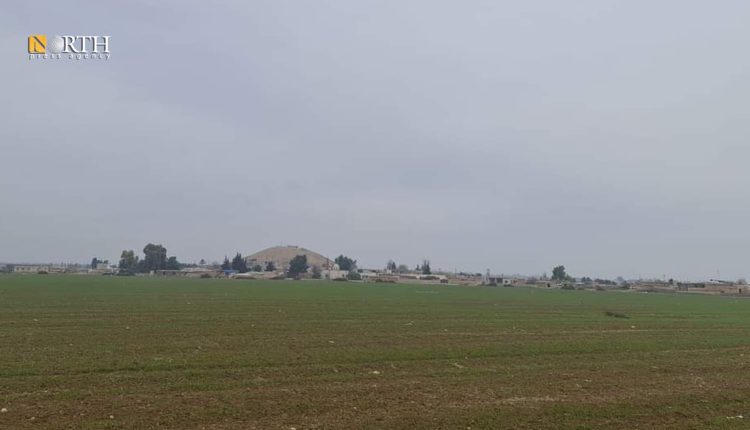
By Qays al-Abdullah
QAMISHLI, Syria (North Press) – Iran has been endeavoring to expand its influence in Northeast Syria, particularly in the major cities of Hasakah and Qamishli, which are considered the backbone of the area. However, over the past decade, Iran has achieved fewer objectives despite its efforts to establish ties with local tribal leaders and its constant shifting of strategies.
It seems that Iran failed to achieve more success on the ground, but it has managed to provoke international stakeholders like the U.S. and Russia although the latter is its ally, but, in fact, both countries are racing for dominance in the region.
Iran still uses the local tribes to serve its interests in the region to enhance its influence and interests by establishing obedient local militias, which are directly run by it.
Attracting tribal leaders
Iran has been endeavoring during the past decade to establish a force in Syria similar to that of the Iraqi Popular Mobilization Forces (PMF). The most prominent attempt was made by a person called Ali Hawas Khlief, who hails from the Arabic Tayy tribe.
A notable member of the Tayy tribe who hails from the village of Jermuz in the south of the city of Qamishli and preferred to remain anonymous for security reasons, tells North Press that Iran supported Khlief to establish a militia from the local tribes, but he failed due to the objection of some tribal leaders who refused Khleif to be their representative for Iran and the Syrian government.
In the past years, Iran invited Arab tribal leaders from Northeast Syria region to meet with high-ranking political and military Iranian figures. The tribal leaders who participated the meeting were Dari Muhammad al-Fares, a notable of Tayy tribe, Nawaf Saleh al-Bashar, tribal leader of Sharabeen tribe, Mahmoud Mansour al-Aqoub, leader of Harb tribe, Faysal al-Azel, leader of Ma’amra tribe, and Khatib Ilyas Talab, representative of al-Bu Asi tribe and leader of a headquarters of the National Defense Forces (NDF) in the city of Qamishli.
The reasons of the meeting were not known, but some sources said that it was held to discuss the Iranian presence in Northeast Syria and to talk about founding a local militia linked to Iran to target the U.S. bases and patrols in the eastern bank of the Euphrates River.
Iran shifts strategy
In 2021, Iran assigned the task of the expansion of its presence in Northeast Syria to the Lebanese Hezbollah to avoid a potential clash with the U.S. and the Russian forces that are stationed in Qamishli International Airport.
At the time, Hajj Mahdi, a leader within the Lebanese Hezbollah, worked on the Iranian expansion in the region. He worked on establishing and supporting the NDF and the government’s al-Baath Brigades under the name of “Special Mission Forces”. The hidden role of these forces became clear in the clashes that erupted between the Internal Security Forces of North and East Syria (Asayish) and the NDF in Tayy neighborhood in Qamishli in 2021.
In 2022, the Lebanese Hezbollah established an office in the government-held neighborhood within the city of Hasakah (locally known as Security Square) and assigned Hajj Raed Khalaf, commander of Baath Brigades, to run the office.
The goal of opening the office was to recruit young people from Arab tribes and to train them in the village of Tartab, south of Qamishli, or send them to the town of al-Dimas in Rif Dimashq Governorate, southwestern Syria.
Last attempt
Raw’a al-Saleh, a pseudonym of a female political activist in a village in the southern countryside of Qamishli that is under the control of the Syrian government, says Iran has become desperate after the failure of most of its attempts.
In an exclusive statement to North Press, al-Saleh points out that Iran is now trying to enhance its presence through Dari al-Fares, a notable of the Tayy tribe, who is in a regular coordination with Iran. However, this coordination has failed to yield results so far.
She adds that al-Fares regularly visits Iran. He lives in Damascus, and also spends time in his village, Jermuz.
The female activist indicates that al-Fares will not succeed in the planned mission as he lost the support of his tribe due to the small geographical area that is under the control of the government forces. In this area, it is so hard to form a militia because of the small number of young people.
Provocations on Russia and the U.S.
Ahmad, who refuses to reveal his surname for security reasons, tells North Press that Iran pushes its affiliated militias to throw stones on the U.S. military patrols in the countryside of Qamishli to film and, later, publish the actions as a popular reaction against the presence of the U.S. forces in the region.
Ahmad was a former NDF member, and he is currently involved within a newly established Iranian-backed militia.
Ahmad indicates that they are deployed to 30 villages in the southern countryside of Qamishli, mainly in Tartab, a village that includes the leadership of the Iranian-backed militias and the training center. The majority of the headquarters are present in the villages of Dibana and Zouri Roundabout on the M4 Highway.
